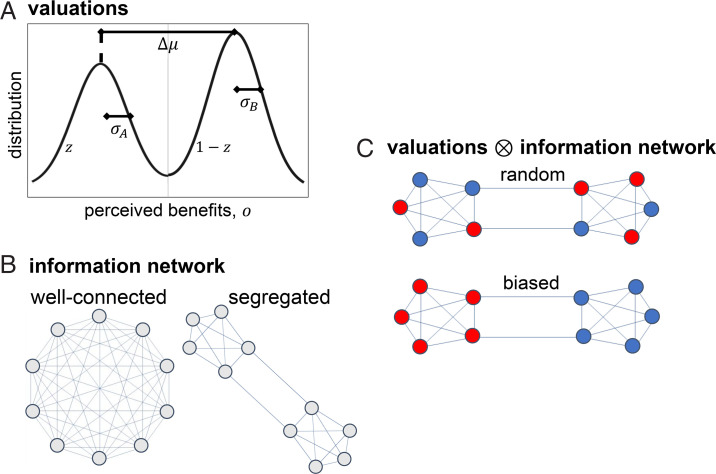Fig. 1.
Configurations of polarization. (A) The distribution of valuations is a consequence of the perceived benefits. This distribution is characterized by a mean, , a distance between peaks, , and the weight, or , and variance, and , of each peak. Thus, the distribution can be homogeneous () or heterogeneous (). This is a proxy for IP. (B) Information about what others do reaches individuals through their social networks. One aspect of AP is that it leads to bottlenecks in information flow. (C) When valuations are heterogeneous, they can be random (randomly distributed in the population) or biased (clustered in neighborhoods with similar perceived benefits). This captures the interaction of IP and AP, which, together with sorting into networks, results in groups of like-minded people.

